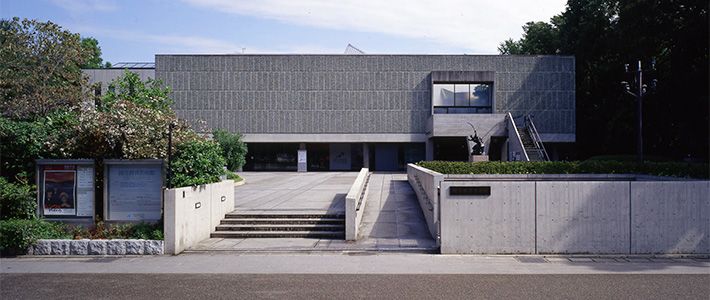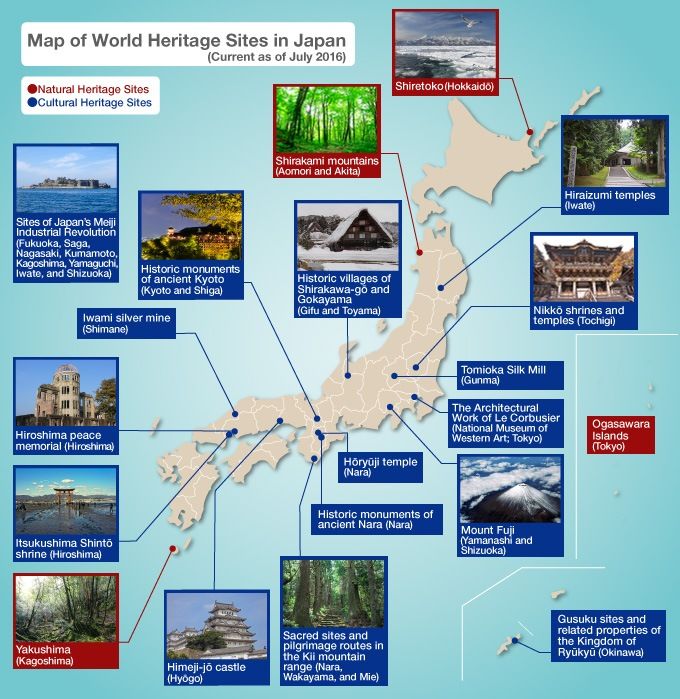
Tokyo Art Museum Recognized in UNESCO List: An Overview of World Heritage Sites in Japan
Culture- English
- 日本語
- 简体字
- 繁體字
- Français
- Español
- العربية
- Русский
Tokyo’s First World Cultural Heritage Site
On July 17, 2016, the World Heritage Committee of UNESCO announced the official registration of “The Architectural Work of Le Corbusier, an Outstanding Contribution to the Modern Movement” on its World Heritage list. The 17 locations across seven countries include one in Japan: the National Museum of Western Art in Tokyo.
The museum is Japan’s sixteenth World Cultural Heritage site and the first in Tokyo. This brings the country’s total number of World Heritage sites to 20, including its four World Natural Heritage sites.
The Convention Concerning the Protection of the World Cultural and Natural Heritage (better known as the World Heritage Convention), adopted at the 1972 General Conference of UNESCO, called for a list to be created of natural and cultural sites of “outstanding universal value.”
In December 1993, Japan’s first World Cultural Heritage sites were registered: the Buddhist Monuments in the Hōryūji Temple area (Nara) and Himeji-jō Castle (Hyōgo). The fifteenth such site was registered in 2015, with the recognition of Sites of Japan’s Meiji Industrial Revolution (spread across eight prefectures). The country’s first two World Natural Heritage sites were also recognized in December 1993: Yakushima (Kagoshima) and Shirakami-Sanchi (Aomori and Akita). These were followed by Shiretoko (Hokkaidō) and the Ogasawara Islands (Tokyo), bringing the total number of sites to four.
As of June 2016, there are 1,031 World Heritage sites around the globe (802 World Cultural sites, 197 World Natural sites, and 32 mixed properties); a total of 192 countries have signed the World Heritage Convention.

| World Heritage Sites in Japan | Year listed |
|---|---|
| World Cultural Heritage Sites (Prefecture) | |
| Buddhist Monuments in the Hōryūji Temple Area (Nara) | December 1993 |
| Himeji-jō Castle (Hyōgo) | December 1993 |
| Historic Monuments of Ancient Kyoto (Kyoto and Shiga) | December 1994 |
| The Historic Villages of Shirakawa-gō and Gokayama (Gifu and Toyama) | December 1995 |
| Hiroshima Peace Memorial (Hiroshima) | December 1996 |
| Itsukushima Shintō Shrine (Hiroshima) | December 1996 |
| The Historic Monuments of Ancient Nara (Nara) | December 1998 |
| The Shrines and Temples of Nikkō (Tochigi) | December 1999 |
| Gusuku Sites and Related Properties of the Kingdom of Ryūkyū (Okinawa) | December 2000 |
| Sacred Sites and Pilgrimage Routes in the Kii Mountain Range (Nara, Wakayama, and Mie) | July 2004 |
| Iwami Ginzan Silver Mine (Shimane) | June 2007 |
| Hiraizumi—Temples, Gardens, and Archaeological Sites (Iwate) | June 2011 |
| Fujisan—Sacred Place and Source of Artistic Inspiration (Yamanashi and Shizuoka) | June 2013 |
| Tomioka Silk Mill and Related Sites (Gunma) | June 2014 |
| Sites of Japan’s Meiji Industrial Revolution: Iron and Steel, Shipbuilding and Coal Mining (Fukuoka, Saga, Nagasaki, Kumamoto, Kagoshima, Yamaguchi, Iwate, and Shizuoka) | July 2015 |
| The Architectural Work of Le Corbusier, an Outstanding Contribution to the Modern Movement (National Museum of Western Art; Tokyo) | July 2016 |
| Natural World Heritage Sites (Prefecture) | |
| Yakushima (Kagoshima) | December 1993 |
| Shirakami-Sanchi (Aomori and Akita) | December 1993 |
| Shiretoko (Hokkaidō) | July 2005 |
| Ogasawara Islands (Tokyo) | June 2011 |